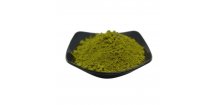Interested in the difference between kanna and kratom? These two plants, often mentioned together, have distinct botanical origins and offer a wide variety of types and alkaloids that have unique effects. What is their historical significance and what is their legal status? If you are looking for answers to these questions and want to understand their differences and similarities, this article will give you a comprehensive view.

Types of kanna and kratom and their alkaloids
Kanna and kratom, though often mentioned in the same breath, hail from distinct botanical families and offer a diverse range of types and alkaloids, each contributing to their unique effects.
Kanna (Sceletium tortuosum), a succulent herb native to South Africa, is renowned for its mood-enhancing properties. The primary alkaloids in kanna, such as mesembrine, mesembrenone, and mesembrenol, are known for their potential to uplift the spirit and soothe the mind. Different types of kanna include the fermented and unfermented forms, with the former being more potent due to the enhanced concentration of alkaloids.
Kratom (Mitragyna speciosa), on the other hand, is a tropical evergreen tree from Southeast Asia. It's celebrated for its diverse effects ranging from stimulating to sedative, depending on the strain and dosage. The key alkaloids in kratom, mitragynine and 7-hydroxymitragynine, are primarily responsible for its pain-relieving, euphoric, and energizing properties. Popular kratom strains include green and white Maeng Da, known for its strong effects, and Red Maeng-da, “favored” for its calming properties.
Both kanna and kratom have a rich alkaloid profile that contributes to their respective effects. Kanna's alkaloids are primarily focused on psychological well-being, whereas kratom's alkaloids have a more varied impact, ranging from pain relief to energy boosts. Understanding these differences is crucial for anyone looking to explore the benefits of these remarkable plants.
In the next section, we will explore the history of both kanna and kratom, uncovering their cultural and historical significance.
History of both
The histories of kanna and kratom are as rich and varied as the plants themselves, each woven deeply into the cultural tapestry of their native lands.
Kanna's history dates back thousands of years in South Africa. Historically used by the San and Khoikhoi peoples, kanna was consumed for its mood-enhancing properties during social and spiritual ceremonies. It was also used in traditional medicine to alleviate hunger and thirst, and as a natural remedy for stress and fatigue. The indigenous methods of fermenting and drying kanna leaves have been passed down through generations, preserving its cultural heritage.
Kratom's roots lie in Southeast Asia, particularly in countries like Thailand, Malaysia, and Indonesia. For centuries, kratom leaves have been used by local communities for their stimulating and sedative properties. It was traditionally chewed by workers to combat fatigue and improve productivity in labor-intensive jobs. In addition, kratom played a role in traditional medicine, used to treat various ailments, including pain and opiate withdrawal symptoms. Over time, its use spread beyond local communities, gaining global attention for its therapeutic potential. Read more about the history of kratom.
Both kanna and kratom's enduring presence in traditional practices highlights their significance and the respect they command in their native cultures.
As modern science begins to explore these ancient plants, their rich histories continue to influence how they are perceived and used today.
How does kanna and kratom smell?
The aromatic qualities of kanna and kratom are distinctive, adding another layer to their intriguing profiles.
Kanna has a subtle, earthy aroma that is mildly sweet and grassy. This gentle scent is reminiscent of the arid regions of South Africa from where it originates. The fermentation process of kanna can intensify its aroma, giving it a richer and deeper olfactory character.
Kratom, in contrast, presents a more robust and pronounced scent. Fresh kratom leaves emit a strong, green, and slightly bitter aroma, indicative of its potency and rich alkaloid content. The scent varies slightly between strains; for instance, Maeng Da kratom has a sharper, more pungent smell compared to the milder, soothing aroma of Red Bali kratom.
The smell of these botanicals not only offers an insight into their character but also plays a role in the experience of using them, enhancing their allure and mystique.
Are they legal?
Navigating the legal landscape of kanna and kratom can be complex, as their status varies across different regions and countries.
Kanna's legality is relatively straightforward. It is legal in most parts of the world, including the United States and Europe. However, as with many natural substances, the legal status can change, so it's always prudent to check the most current regulations in your area.
Kratom's legal status, on the other hand, is more varied and often subject to ongoing debates. In the United States, kratom is legal at the federal level but banned or regulated in some states and cities. In Europe, the legality of kratom differs from country to country, with some nations allowing its use and others imposing restrictions or outright bans. For instance, it is legal in the UK under certain conditions, while it is completely banned in countries like Sweden.
It's essential for potential users and buyers to stay informed about the legal status of kanna and kratom in their specific location. This knowledge not only ensures compliance with local laws but also supports responsible and safe usage of these botanicals.
Which one should you opt for?
Choosing between kanna and kratom largely depends on your individual needs, preferences, and the specific benefits you seek.
Kanna is often chosen for its mood-enhancing and anti-anxiety properties. It's known for uplifting the spirit, providing a sense of calm, and enhancing social interactions. Kanna is an excellent choice for those seeking a natural way to manage stress, anxiety, or mild mood fluctuations. Its effects are generally more subtle and can be a good option for those new to herbal supplements.
Kratom, with its diverse range of effects, caters to a broader spectrum of needs. If you're looking for pain relief, enhanced energy, or improved focus, certain strains of kratom like Maeng Da can be highly effective. Alternatively, strains like Red Bali are sought after for their calming and sedative properties, making them suitable for those dealing with insomnia or needing relaxation.
The choice also depends on your tolerance to herbal remedies and your preferred method of consumption. Kanna, being milder, can be a starting point for beginners, while kratom, with its varied potency, suits both new and experienced users.
Ultimately, the decision between kanna and kratom should be based on your specific wellness goals and how your body responds to these herbs. Both offer unique benefits and can be valuable additions to your natural wellness regimen.
Buy kanna and kratom online
In today's digital age, purchasing kanna and kratom online has never been easier. Kratomit.eu offers a convenient, secure, and discreet way to explore these remarkable botanicals. Our online store features a wide selection of high-quality kanna and kratom products, ensuring that you find the perfect match for your needs.
Whether you're a first-time buyer or a seasoned user, our user-friendly website makes your shopping experience hassle-free. From detailed product descriptions to expert customer service, we provide all the information and support you need to make an informed choice. Plus, with fast shipping and secure payment options, your journey towards natural wellness is just a few clicks away.
Distinctions of kanna and kratom
While kanna and kratom share some similarities in their natural origins and traditional uses, they also possess distinct differences that set them apart. Understanding these distinctions is key to selecting the one that best aligns with your wellness goals.
- Origin and composition: Kanna, from the arid regions of South Africa, primarily contains alkaloids like mesembrine, targeting psychological well-being. Kratom, hailing from the tropical forests of Southeast Asia, has a complex alkaloid profile, including mitragynine and 7-hydroxymitragynine, which contribute to its diverse range of effects from energy-boosting to pain relief.
- Effects: Kanna is predominantly known for its mood-enhancing and anti-anxiety properties. It offers a subtle, uplifting experience, making it ideal for managing stress and improving emotional balance. kratom, in contrast, offers a broader spectrum of effects. Depending on the strain, it can energize, soothe, or relieve discomfort, catering to a variety of needs.
- Usage and potency: Kanna is often preferred for its milder impact and is suitable for beginners or those seeking gentle support. Kratom, with its potent effects, appeals to both new and experienced users who require a more pronounced outcome.
By appreciating these unique qualities, one can make a more informed decision between kanna and kratom, based on individual preferences and desired effects.
Which is better overall?
Determining which is better between kanna and kratom depends on your personal needs and preferences. Both offer unique benefits, and understanding these can guide your choice.
Kanna is better suited for those seeking a natural way to enhance mood, reduce stress, and promote emotional well-being. Its milder effects make it an excellent choice for everyday use and for individuals sensitive to stronger supplements.
Kratom, with its potent and diverse effects, is preferable for those needing more pronounced benefits like pain relief, increased energy, or aid in combating insomnia. It's a versatile herb that can be tailored to meet various health and wellness goals.
Ultimately, the choice between kanna and kratom is not about which is better universally, but which is better for you personally. Assessing your specific requirements and how your body responds to each herb will lead you to the right choice.
Pros and cons
Pros of kanna:
- Enhances mood: Known for uplifting spirits and promoting emotional well-being.
- Reduces anxiety and stress: Helps in managing everyday stress and mild anxiety.
- Minimal side effects: Generally well-tolerated with fewer side effects compared to stronger supplements.
- Cultural and historical significance: A rich history of traditional use in South Africa.
- Versatility in use: Can be consumed in various forms like tea, capsules, or chewed.
Cons of kanna:
- Milder effect: May not be sufficient for those seeking strong or immediate results.
- Limited research: Scientific studies on kanna are still emerging.
- Interactions with medications: Potential to interact with certain medications, particularly SSRIs.
Pros of kratom:
- Pain relief: Effective in managing chronic pain.
- Energy and focus: Certain strains can enhance energy levels and improve focus.
- Sedative effects: Useful in promoting relaxation and aiding sleep.
- Variety of strains: Wide range of strains available, each with unique effects.
- Traditional and cultural use: Long history of use in Southeast Asian traditional medicine.
Cons of kratom:
- Potential for side effects: Can cause side effects like nausea, dizziness, or dependency if misused.
- Legal and regulatory issues: Legal status varies by region and is subject to change.
- Need for responsible use: Requires understanding of dosage and strains for safe use.
Our key takeaways
Both kanna and kratom offer unique benefits, and their selection depends on the individual user's needs and preferences. Kanna is ideal for those looking for a natural way to improve mood and reduce anxiety, while kratom is more suitable for those who need a more effective solution for pain, energy, or help with insomnia. Both have a rich history and are deeply rooted in the cultures of their native countries. When deciding between kanna and kratom, it is important to consider personal wellness goals and the body's response to these herbs. Whichever you choose, both are valuable contributions to a natural health regimen and offer a fascinating combination of cultural significance and therapeutic potential.
Dominik, Kratomit
Sources:









